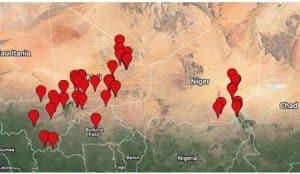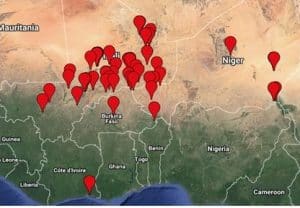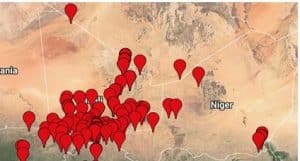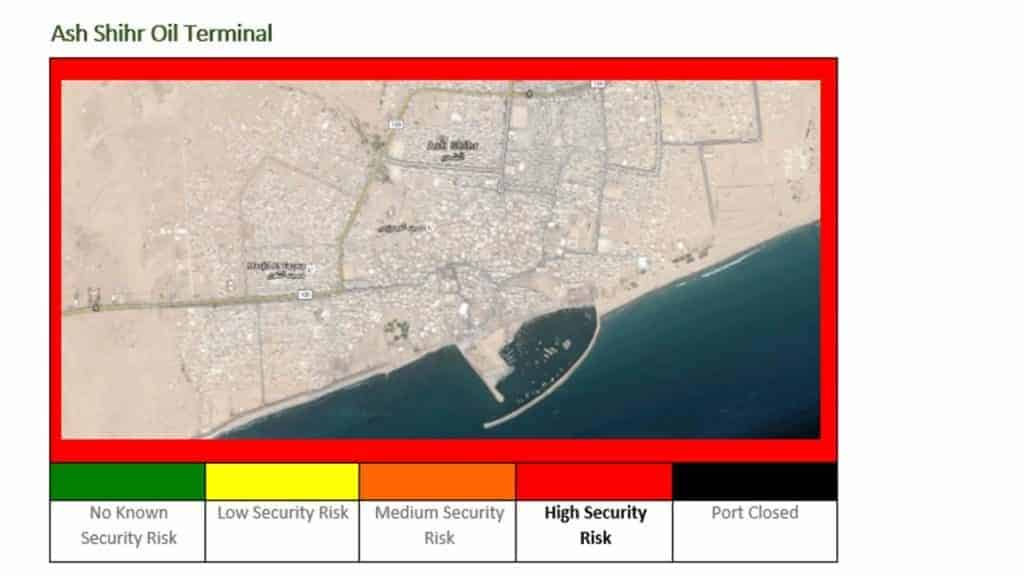Update on Burkina Faso Shootout
May 23, 2018 in al-Qaeda, Burkina Faso, Sahel Region- On 22 May, a shootout occurred between security forces and suspected terrorists in the Rayongo neighbourhood on the outskirts of Ouagadougou.
- Military uniforms were found among items confiscated by security forces.
- Security presence is heightened in and around Ouagadougou.
- Visitors are urged to remain vigilant and follow guidance issues by security forces.
On 22 May, a shootout occurred between security forces and suspected terrorists on the outskirts of Ouagadougou. At approximately 3 am, police responded to a report of suspicious activities in the Rayongo district (Arrondissement 11, south-east Ouagadougou). A seven-hour stand-off near the Karpala and Balkuy neighbourhoods left three assailants dead, and five gendarmes and one civilian wounded. One assailant was taken alive and held for questioning.
Weapons and other material were found at the scene, including Kalashnikov rifles, grenades, truck-mounted machine guns, bomb-making materials, and several rounds of ammunition. Ominously, among the seized items were military uniforms.
On 2 March, armed assailants conducted a coordinated assault against multiple targets in Ouagadougou, including Burkinabe military headquarters and the French embassy. Multiple verified reports indicated that attackers dressed in national military uniforms were seen getting out of cars and firing. A day after the attack, extremist group Jama’at Nasr al-Islam wal Muslimin (JNIM), affiliates of Al Qaeda in the Islamic Maghreb, claimed responsibility for the attack. A statement released by the group claimed the attack, citing retaliation for a previous raid during Operation Barkhane by the French army in northern Mali. Security Minister Clement Sawadogo says the extremists involved in the 22 May shootout are linked to the 2 March attacks.
On 8 May, a communique attributed to al Qaeda in the Sahel region warned that the group would attack Western companies established in the Sahel region. The translated missive states, “This statement calls to boycott all Western companies and foundations … that operate in the Islamic Maghreb … and the countries of the Sahel, and gives a warning to them that they are legitimate target for the mujahideen.” The statement singled out France and its regional allies: “We have decided to strike that which prolongs the continuity of these agent governments and enables the French occupier to provide a lavish life and prosperity to its people.”
Currently, there is heightened police presence in Ouagadougou, where three major attacks have occurred in less than two years. The nation also remains on high alert as Burkinabe soldiers and police have also come under repeated attack near the borders with Mali and Niger.
Although the attackers pre-emptively thwarted in yesterday’s stand-off, it remains likely that the AQ affiliates will continue attempts to target western companies, as well as French, Burkinabe, or regional military forces in and around the capital.
In a separate event, it was reported that armed individuals visited the village of Boula, (Gnanga province) and announced to the local population that there is now a ban on celebrating baptisms and weddings. According to witnesses, the ban spans from the Christine Drilling (a major hydraulic infrastructure near Boula) to Mali. The armed men threatened any who would reveal them to defence or security forces, adding they would eliminate authorities that oppose their application of sharia law. According to the witnesses, the fighters left, heading toward the border with Mali.
Members of the Peul community near the Béli river have formed a self-defence group to protect their communities from the increased attacks. The members are composed of composed of Malian and Burkinabe civilians who refer to themselves as the Alliance for Sahel Salut.
MS Risk currently advises against travel to all areas of the country north of the town of Boulsa, as well as areas within 40 kilometres (24 miles) of the western border with Mali, and the W National Park in the southeast of the country, bordering Benin and Niger. MS Risk also advises against all but essential travel to the rest of Burkina Faso, including Ouagadougou. Visitors to Burkina Faso are urged to remain vigilant at all times, and follow guidance issues by security forces.. Militants are likely to be planning further attacks, including areas that are popular with foreigners (particularly westerners). This includes hotels, cafes and restaurants, and resorts. Western interests across the region, including in Burkina Faso, may also be targeted.
African Union Warns IS Foreign Fighters Headed to Africa
December 17, 2017 in Africa, al-Qaeda, IS, Islamic StateReports have emerged that up to 6,000 Africans who fought for the so-called Islamic State (IS) are making their way back to Africa after the group was forced out of territory previously held in Syria and Iraq. The threat posed by IS militants was raised on 11 December 2017 during a meeting on counter-terrorism organized by the African Union (AU) and Algeria. The AU’s top security official called on regional countries to prepare. The report comes as the G5 Sahel is launching operations in the West African region amidst an increase in terrorist activity in the past year.
Smaïl Chergui, the AU’s commissioner for peace and security, told the meeting “there are reports of 6,000 African fighters among the 30,000 foreign elements who joined this terrorist group in the Middle East.” He warned that African countries will need to work closely with one another to share intelligence in order to counter returning militants.
After IS seized vast swathes of Iraq and Syria in 2014, tens of thousands of foreigners joined the terrorist group. However, in the last year, IS has suffered a string of losses to both its territory and military capabilities. Earlier this month, Iraq declared that the country was had been liberated from IS’ control. In Syria, the terrorist group remains under pressure. The squeeze on IS in Iraq and Syria has sparked concerns that its remaining foreign fighters will return home to spread their ideology or conduct extremist actions.
Africa’s Fragile Security Situation
Africa’s security situation remains fragile as a number of countries are battling insurgencies led by major terrorist groups with links to al-Qaeda and IS. Continued insecurity in Libya and Mali, along with insurgencies in Somalia and Nigeria, have transformed areas of the continent into breeding grounds for jihadi activity – resulting in regional instability. Fighters with weaponry are able to move with relative ease through the porous borders. These regional conflicts have also spilled across borders, and have begun to impact stable nations.
In Nigeria, Boko Haram’s nine-year insurgency has continued, despite the Nigerian government’s announcements on numerous occasions that the terrorist group has been defeated. Although the number of attacks in the northeastern region of the country has significantly declined in the last year, and Boko Haram no longer controls major areas, suicide bombings continue to target mosques, markets and other soft targets. The Far North region of Cameroon and the southern Diffa region of Niger have been impacted by Boko Haram violence. In Somalia, al-Shabaab has remained active, and in October the group launched their deadliest attack – a truck bombing in the capital Mogadishu that killed over 500 people. The United States has carried out dozens of airstrikes targeting senior al-Shabaab commanders this year, however the central government in Mogadishu has minimal control outside the capital. Al-Shabaab has continued to launch attacks near the border regions with Kenya.
In West Africa, the continued situation in Mali has increasingly impacted security across the region. Fighting has spilled as terror groups launch attacks in Ivory Coast, Burkina Faso, and Niger. In 2015, at least 81 incidents of terrorism were reported in Burkina Faso, Mali, and Niger, with most incidents occurring in Mali. In 2016, this figure decreased slightly to 70 incidents, yet regional terrorist groups proved their operational capabilities by launching a major attack in Grand Bassam Ivory Coast in March of that year. In 2017, the number of terrorist incidents has nearly doubled from 2016, with at least 132 attacks reported as of 15 December. Furthermore, the northern Sahel region in Burkina Faso has seen a sharp rise in extremist activity this year, as terrorist groups operating in the area increasingly target local communities.
2015 – 81 Terrorist Incidents reported; most activity occurring in Mali
2016 – 70 terrorist incidents reported. While activity slightly declined, groups are becoming bolder, launching major attacks in countries not previously threatened by terrorism, like Ivory Coast
2017 – 132 incidents reported as of 15 December, with a major expansion of reported incidents in the southern region of Mali, northern area of Burkina Faso, and western Niger.
The African continent is now under increased threat from a battle between IS and al-Qaeda, as both terror groups seek to gain influence in the region. This battle has already begun; IS aims to find new territory after suffering major losses in Iraq and Syria, and al-Qaeda aims to secure its future on the African continent by expanding its operations into countries previously unaffected by terror, and forming alliances in the sub-Saharan region.
IS influence on the African continent has increased in recent years – Boko Haram has split, with one faction continuing under the al-Qaeda banner and another pledging allegiance to IS. Similarly in Somalia, a small group of IS fighters have emerged and launched attacks in the Puntland region, though officials have indicated that their influence remains minimal. Al-Qaeda has also sought to expand their influence, and have used Mali’s continued insecurity to their advantage. New groups have emerged along the southern Malian border with Burkina Faso and Niger. These groups have proven to be deadly as they have launched attacks on the local communities, kidnapping and killing locals as they attempt to spread their ideology.
While the G5 Sahel operation is a sign that West African leaders are aware of the threat posed by terrorist groups operating in the region, its impact remains to be seen as funding issues have impacted the operation.
Three Jihadist Groups Operating in Sahel Region Announce Merger
March 7, 2017 in al-Qaeda, West AfricaMauritania’s private news agency ANI announced on 2 March that three jihadist groups which operate in the African Sahel region, have merged to form one single organization. The private news agency cited a video that was distributed by the Islamists.
The new group will operate under the name the Group to Support Islam and Muslims. The group is composed of Mali’s al-Qaeda-linked Ansar Dine, al-Mourabitoun, which is led by Algerian extremist Mokhtar Belmokhtar, and the Macina Brigades group, which is active in central Mali. It will be led by Ansar Dine’s Iyad Ag Ghaly. The three groups already have ties to al-Qaeda.
ANI distributed a screenshot of the video, which it said it received on 1 March. The screenshot depicts five jihadist leaders seated together, with Iyad Ag Ghaly in the centre. The four others are identified as the “emirs” of the new movement. In an audio excerpt, Iyad Ag Ghaly can be heard swearing allegiance to slain Jordanian jihadist Abu Musab al-Zaraqi, whose al-Qaeda in Iraq group later evolved in to the so-called Islamic State (IS) group, and Ayman al-Zawahiri, who is al-Qaeda’s current leader. He is also heard praising al-Qaeda founder Osama Bin Laden, who was killed in Pakistan in may 2011. It is not clear when the video was recorded, although ANI notes that it was “recent.”
The announcement of the merger comes at a time when jihadist groups in northern Mali are increasingly threatening the greater West African region, as they move southwards towards the border with Burkina Faso and Niger. It also comes with the development of a new militant group in northern Burkina Faso, which in recent weeks, has launched attacks and threatened teachers in the northern region of the country. An emerging extremist group in Burkina Faso, Ansaroul Islam (Ansar al-Islam lil-ichad wal jihad, or IRSAD), is believed to be the franchise of the Macina Liberation Front (MLF) in Burkina Faso. The group is thought to be operating in the border regions of Mali and Burkina Faso, particularly in the province of Soum (Burkina Faso). The group claimed responsibility for the 16 December 2016 attack on a Burkinabe military position in Nassoumbou (province of Soum) and attacking to “hypocrite collaborators” in Djibo and Sibe, all of which are located in northern Burkina Faso. The group at the time warned of further attacks. In late January 2017, reports emerged of armed men arriving on motorcycles in villages in northern Burkina Faso before entering packed classrooms and demanding that the teachers review their curriculum. It is believed that this new jihadist group was behind this. Ibrahim “Malam” Dicko is believed to be the leader of this new group. He is a close associate of Amadou Koufa, leader of the MLF. In 2012, Dicko began preaching on local radio in Djibo, the Soum Province capital, 125 miles north of Ouagadougou, near the border with Mali. His family is from a village in the Togol department, in the Soum province.
Ansar Dine
Militant group led by Iyad Ag Ghaly, one of the most prominent leaders of the Tuareg rebellion. Formed in 2012, they are based in northern Mali and their primary operations are against the Malian military and opposing rebel groups. The group’s objective is to impose Islamic law across Mali.
Al-Mourabitoun
Also known as: Al-Mulathamun Brigade; Al-Mulathamun Masked Ones Brigade; Al-Murabitoon-al-Qaeda in West Africa; Al-Muwaqqi’un bil-Dimal Khaled Abu al-Abbas Brigade; Masked Men Brigade; Signatories in Blood; Signed-in-Blood Battalion; The Sentinels; Those Signed in Blood Battalion; Those who Sign in Blood; Witnesses in Blood
The group is based in the Sahara desert in northern Mali and contains fighters who are loyal to veteran Algerian militant Mokhtar Belmokhtar. It was formed in 2013 from a merger between al-Mulathamun (“The Masked Men”) Battalion (AMB) and the Movement for Unity and Jihad in West Africa (MUJAO). Both groups were offshoots of al-Qaeda in the Islamic Maghreb (AQIM). Al-Mourabitoun aims to implement sharia law. The US State Department has reported that the group is likely funding its operations through kidnapping ransoms and criminal groups. It is also likely that it receives funding through its connections to other terrorist organizations.
Macina Brigades Group
Also known as Macina Liberation Movement / La Force de Libération du Macina, ML Movement, Massina Liberation Movement, Ansar al-Din Macina brigade, Katibat Macina.
It is an extremist organisation based largely around the town of Macina in southern Mali. It is an arm for Ansar Dine to coordinate actions and operations in central and southern Mali. The group has risen in prominence, carrying out a number of attacks since January 2015. The MLF is believed to have around 4,000 members, recruiting largely from the Fulani (also called Peul or Fulbe) ethnic group, which has scattered populations across West Africa. It is thought that MLF is Ansar Dine’s official branch in southern Mali.
MLF exploits grievances from ethnic Fulani, which are spread across the Sahel Region of Africa. The Fulani have traditionally been cattle herders, and have been engaged in a struggle with farmers across the Sahel as pasture-land and resources in the region have diminished. The violence between the groups can easily be moulded into a religious dimension; the majority of Fulani are Muslim, while their farming rivals are commonly Christian.
Update: Ash Shihr Oil Terminal, Yemen – 3 August, 2016
August 3, 2016 in al-Qaeda, YemenDue to the value of the export terminal and its proximity to Mukalla port, Ash Shihr terminal is considered high risk. MS Risk advises extreme caution for vessels traveling to this port.
In late April, forces loyal to Yemen’s recognised government recaptured the Ash Shihr oil terminal from al Qaeda in the Arabian Peninsula, who controlled the port for over a year. The port resumed opperations on 22 July. While no significant attempts have been made against the Ash Shihr terminal, both AQAP and IS have recently targeted nearby Mukallah port, approximately 40 miles away. Control of Mukallah was also wrested from AQAP earlier this year, and attacks agains the port have been conducted both on land and at sea.
On 2 August, Hadi government security forces alongside coalition forces disrupted a coordinated attack that was planned by AQAP on al Mukalla port. AQAP militants attempted to attack the port with artillery and machine guns, while others approached the port by boat. Hadi-allied forces arrested some of the attackers, yet others managed to escape.
Nearly 80% of Yemen’s oil exports have been conducted through Ash Shihr terminal, making the port an attractive and valuable target. It may be viewed as an iconic or strategic target by local insurgents. As the port resumes normal shipping operations, there is a strong likelihood of attempts to disrupt activities both on land and at sea.
Security has been reinforced around both Ash Shirh and Mukalla ports, however pirates or militant groups attempting to conduct maritime attacks do not require a port in order to launch a skiff. This may result in a higher risk to warter-borne security in the vicinities nearest to the ports. Shipmasters and owners should remain aware of the situation at all times, including changes to protocol when entering Yemeni maritime waters or ports. It is anticipated that friendly naval forces will increase their presence which will lead to increased boardings, inspections and overall protection/deterrence however this has not been confirmed yet.
Five Years On: Al-Qaeda Down But Far From Out After Bin Laden’s Death
May 4, 2016 in al-QaedaThe first of May 2016 marks five years of the death of al-Qaeda chief Osama bin Laden, however the network that he founded is far from dead despite suffering a series of setbacks.
While al-Qaeda has been replaced as the preeminent global jihadist power by the so-called Islamic State (IS) group, which has held on to territory in Syria and Iraq and has a foothold in Libya, experts maintain that al-Qaeda nonetheless remains a potent force and dangerous threat. Attacks, such as the January 2015 attack on the Charlie Hebdo office in Paris, France, and a string of shootings in West Africa over the last several months have shown that al-Qaeda continues to maintain the capabilities to carry out large-scale attacks. Furthermore, in Syria and Yemen, al-Qaeda militants have taken advantage of the continued chaos to take control of significant territory, in some instances presenting themselves as an alternative to the brutality of IS rule.
When United States Special Forces killed bin Laden in Pakistan on 2 May 2011, the militant group that he had founded in the late 1980s had been baldy damaged as many of its militants and leaders had either been killed or captured during the US’ “War on Terror.” Dissention grew within the jihadist ranks as al-Qaeda’s new chief, Ayman al-Zawahiri, struggled to replace bin Laden. One of the militant group’s branches, originally al-Qaeda in Iraq, would later break away to form the Islamic State of Iraq and the Levant (ISIL). After successfully capturing parts of Syria and Iraq in 2014, the group declared an Islamic “caliphate” in areas under its control, and would later call itself the Islamic State. Since then, IS has eclipsed its former partner, and many other global militant groups. It has drawn thousands of jihadists, both local and foreigners, to its cause and has claimed responsibility for attacks in Brussels, Paris, Tunisia, Turkey, Lebanon, Yemen, Saudi Arabi and on a Russian airliner over Egypt – All of which have left hundreds dead. It continues to threaten European states with attacks such as those that were carried out in Paris and in Brussels. IS’ self-declared “emir” Abu Bakr al-Baghdadi has also won pledges of allegiance from extremist groups across the Middle East and in Africa. Powerful IS affiliates operating in Egypt’s Sinai Peninsula and in Libya have carried out a string of deadly attacks, with growing international concerns that the jihadist group is spreading from the Middle East into Africa and beyond. Experts have noted that IS has been especially effective at using new technology to surpass al-Qaeda, which has been less tech-savvy. According to Jean-Pierre Filiu, a Paris-based expert on Islam and jihadist groups, “al-Qaeda propaganda has become invisible on social networks thanks to the media war machine that Daesh (IS) has managed to successfully create,” adding, “al-Qaeda has lost everywhere to Daesh, except in the Sahel” desert region of northern Africa.
Other experts however, such as William McCants of the Brookings Institution in Washington, note that while al-Qaeda has lost some ground to IS, the organization has recovered, noting that “al-Qaeda has a strong showing in Syria and in Yemen.” In Syria, the group’s local affiliate, Al-Nusra Front, is one of the strongest forces that is fighting Syrian President Bashar al-Assad’s regime. The group also holds large parts of the northern province of Idlib. Meanwhile in Yemen, the local branch, al-Qaeda in the Arabian Peninsula (AQAP), has seized significant territory in the south and southeastern regions of the country as the Yemen government struggles against Iran-backed Shi’ite insurgents who have taken control of the capital city Sanaa and other areas of the country. AQAP did however suffer a significant setback in late April 2016 when Yemeni troops recaptured the key port city of Mukalla, which it had occupied for more than a year. McCants notes that despite this loss, AQAP remains the key jihadist force in Yemen as it has thousands of members compared with only several hundred who are affiliated with IS. AQAP, which is considered by Washington to be al-Qaeda’ most well-established and dangerous branch, has also claimed responsibility for one of the group’s most important attacks abroad in recent years. In January 2015, gunmen stormed the Paris offices of satirical magazine Charlie Hebdo. That assault, which was claimed by AQAP, killed 12 people.
Since November 2015, Al-Qaeda’s branch in the Sahel region, al-Qaeda in the Islamic Maghreb (AQIM), has carried out a string of deadly assaults on hotels and restaurants in Mali, Burkina Faso and Ivory Coast, which have left dozens dead, including many foreigners. In March, New York-based intelligence consultancy The Soufan Group disclosed that the attacks in West Africa “have reasserted the regional presence of AQIM and shown its expanding reach…AQIM has used the attacks to challenge the influence of the Islamic State, to demonstrate and build its local support and to show that it is united after earlier damaging divisions.”
The International Crisis Group notes that while IS has reshaped the jihadist landscape, al-Qaeda “has evolved,” noting that its branches in North Africa, Somalia, Syria and Yemen “remain potent, some stronger than ever.” The United States also continues to see al-Qaeda as a major threat, as has been exemplified in Yemen, where the US is pursuing a vigorous drone war against the group. The strikes have killed many senior operatives, including al-Qaeda’s second-in-command Nasir al-Quhayshi in June 2015. In March, a US strike on an AQAP training camp in Yemen killed at least 71 recruits. In Somalia, the US has also carried out a string of drone strikes against al-Shabaab, an al-Qaeda affiliate that is trying to topple the western-backed government in the capital Mogadishu.




